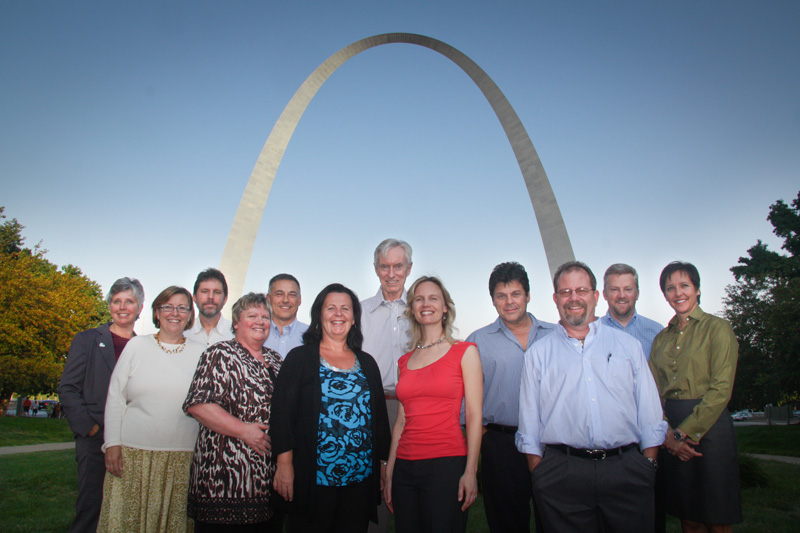Representatives of the seven primary organizations that comprise the massage therapy profession gathered on September 13-14 for a Leadership Summit in St. Louis, Missouri. The purpose of the meeting was twofold: to identify the most significant challenges and limitations that currently exist in this field, and to begin the process of developing and implementing solutions that will enable it to move forward in its evolution. Those present were:
- Alliance for Massage Therapy Education
President Pete Whitridge and Executive Director Rick Rosen - American Massage Therapy Association
President Glenath Moyle and Executive Director Shelly Johnson - Associated Bodywork & Massage Professionals
Chairman Bob Benson and President Les Sweeney - Commission on Massage Therapy Accreditation
Commissioner Randy Swenson and Executive Director Kate H. Zulaski - Federation of State Massage Therapy Boards
Executive Director Debra Persinger - Massage Therapy Foundation
President Ruth Werner (AMTA’s Executive Dir. also serves in this capacity for the Foundation) - National Certification Board for Therapeutic Massage & Bodywork
Chair Alexa Zaledonis and Chief Executive Officer Paul Lindamood
The meeting was facilitated by Andrew Lebby, PhD, founding partner of The Performance Group, a consulting firm based in Washington, DC that assists organizations in navigating the process of large-scale change.
In preparation for this meeting, each of the organizations submitted proposed agenda items which provided the raw material for the discussions. Broad agreement emerged about a need to pursue opportunities for improvement in order to become an effectively functioning profession. The current challenge, at its most fundamental level, goes to the inconsistent quality of massage therapy services provided to clients.
Inconsistent quality, depth and focus of entry-level massage therapy education and licensure portability (or professional mobility) were identified as priority discussion items.
Regarding entry-level education, a series of factors were identified that need to be addressed, including: curriculum design, teacher competency, student assessment, and updating subject matter to match evidence-informed practice. Diversely successful massage school program results are perhaps not surprising given the group observation that, unlike most other allied health fields in which both institutional and programmatic accreditation are mandatory, barely half of the 1,382 massage therapy programs in the United States have received institutional accreditation and only 100 have received specialized programmatic accreditation.
On the issue of portability, the group agreed that the problem stemmed from the lack of consistent state regulations. In pursuit of a solution, the group affirmed the role of the Federation of State Massage Therapy Boards in its recently-launched project to develop a Model Practice Act. Participants noted the particular importance of working toward a common scope of practice definition and of substituting a substantively-derived basis for required minimum education hours for current arbitrary hour requirements. The group examined a specific proposal to address the education hour question. Each organization agreed to consider the proposal within their organization and determine next steps.
Participants also agreed that, as model practice guidelines emerge, a re-calibrating of government relations advocacy efforts by several organizations could facilitate widespread state adoption.
With a combination of insightful discussion and professional respect shown by the 12 representatives, the meeting was positive, powerful and highly productive. Overall, it was recognized that a high level of cooperation and coordination among all the players is necessary to address the problems at hand – and that many of these changes will take a considerable length of time.
The representatives decided to continue the inter-organization dialogue begun in St. Louis. That will include another face-to-face meeting on May 1-2, 2012, as well as ongoing telephone and electronic communication.
Participants in the Massage Therapy Leadership Summit
St. Louis, Missouri, September 13-14, 2011
Left to right: Ruth Werner (MTF), Shelly Johnson (AMTA), Rick Rosen (AFMTE),
Glenath Moyle (AMTA), Randy Swenson (COMTA), Debra Persinger (FSMTB),
Bob Benson (ABMP), Kate Zulaski (COMTA), Paul Lindamood (NCBTMB),
Pete Whitridge (AFMTE), Les Sweeney (ABMP), Alexa Zaledonis (NCBTMB)

